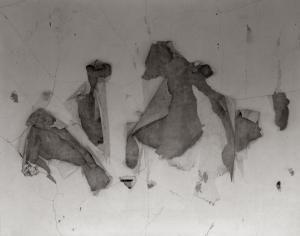20% off all products! Sale ends tonight at midnight EST.
February 2nd, 2016 - 07:26 AM

Normally, it is not the photograph that we see, but the "subject" of the photograph, its referent. Each photograph states, "This has existed". Most viewers miss the art in photographs because they get absorbed in the referent.
What you get out of a visit to a museum or an exhibit or a work of art, or a book, or a piece of music, depends completely on what you bring to it. A person who has wide experience in the arts will get more out of it than a first time visitor. However, either will have to approach in the same way if he/she is to enjoy and be enriched by the experience. Each can bring an open mind, and a sense of wonder.
For many years you've been using your eyes for practical purposes, (such as to keep from running into walls). To appreciate art, you must learn to use your eyes to feel the qualities of the work. Your experience of life, and your knowledge form a foundation for feeling with your eyes.
The photograph contains the expression of the photographer as well as the subject depicted, (the referent). If the photographer gets lost in the subject, or in the image, he doesn't develop as an artist. Getting lost in the subject means being so taken by the subject that you can't see the photograph. Getting lost in the iImage means being so captivated by the image that you don't see the photograph. The photograph is the sheet of paper which you are viewing.
With digital photography, the final result is most often not a print, but an image in an electronic medium, either digital photo frame, computer, or digital projection. The resulting image is subject to the color rendition of the device. Each device has a different rendition. The image is never exactly what the photographer intended, nor is it a new object.
For the photographer who wants to make a final piece of art that is exactly what he wants it to be, the print is the only answer. The print is a new object, and, when made by the photographer, is exactly what was intended.
The introduction of Photoshop led to the creation of impossible referents: a cat standing on its tail, juggling mice and goldfish while balancing a snake on its nose, for instance. Manipulation of the image, although entertaining, has destroyed a lot of the credibility of photographs as records of actual events, which is the great strength of photography.
There is also a style at present among insensitive photographers to tweak the color of their work to make it spectacular, straining the credulity of viewers, and weakening photography's strongest value, the accurate representation of reality.
With some digital cameras, the photographer can have the choice of the color renditions of films, with their characteristic highlight and shadow compression of values. These characteristics are a fault in imaging. Great photographers have always invented methods of overcoming this fault in film imaging. Digital imaging has never had this fault. Digital imaging at its best is vastly superior to film imaging. It baffles me that someone would want to step backward.
Before digital photography, the process demanded more dedication on the part of the photographer. With digital, the technical quality is so good that anyone can make images of excellent technical quality. However, the art of photography is as difficult as it ever was, and artistic photography is just as rare as it ever has been. Digital photography has meant the creation of astronomical numbers of bad photographs, and more picture takers than ever are getting lost in the subject or the image.
Comments
There are no comments on this blog. Click here to post the first comment.